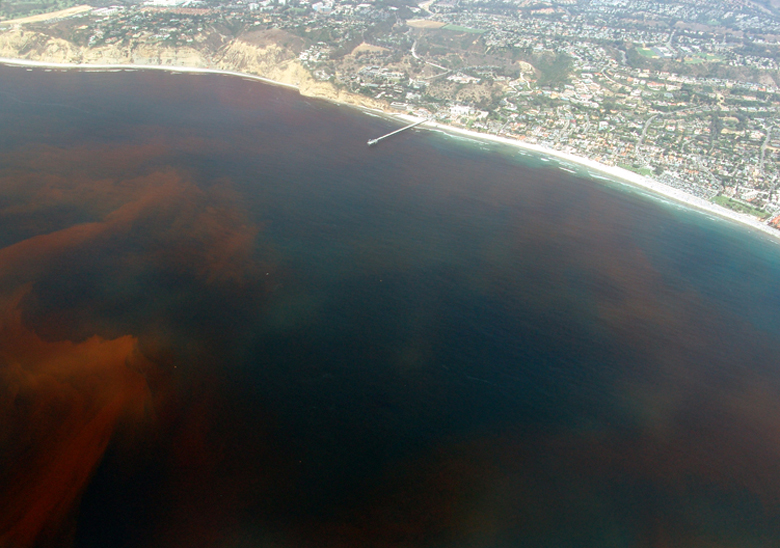
Wikimedia Commons
Dangerous red tides that kill fish and marine mammals and are toxic, even carcinogenic, to humans, might be destroyed using bursts of ultrasound.
Researchers at the U of Hull in the UK experimented with ultrasound on a species of algae that can cause respiratory disease and liver cancer in humans, reports New Scientist.
The team tested three frequencies of ultrasound on Anabaena sphaerica. All worked, though the 1-megahertz band was most effective—probably by bursting the buoyancy cells filled with nitrogen that keep the algae afloat.
Of course, you’ve got to ask what else the sound might be killing.
In response: The researchers believe ultrasound could be targeted to individual species of algae and the resonant frequency of their buoyancy cells. In theory, this wouldn’t damage regular plant cells, which are relatively impervious to pressure waves.
These high frequencies are also absorbed rapidly in water. At 1 megahertz the effective radius is less than 60 feet. That’s good in that it limits the affected zone but bad in that it would be a lot of work to cover a big bloom.
The study also doesn’t acknowledge—as far as I can tell—the fact that when a whole bunch of algae die and sink to the bottom they fuel a bloom of decomposers who suck up all the available oxygen in the water—turning a red tide into a dead zone.
Hmm.
Still, it might be a way to nip a bloom in the bud. Though we still need to tackle all those annoying onshore factors that grow red tides in the first place, like fertilizer and manure run-off from abusively unsustainable agricultural practices.
The paper’s in Applied Acoustics.












